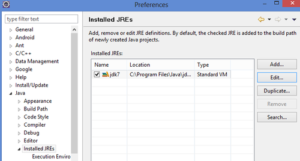Today I answered a question about how to create a folder in Google Drive . The answer is simple: Google Drive considers a folder to be simply another file, so to create a folder you use the same API call as creating a file, except that you pass in a MIME type of application/vnd.google-apps.folder.
It’s a pretty straightforward answer, but it started me thinking about the nature of folders and Google. It’s interesting that Google Drive supports folders at all, considering that another famous Google service – Gmail – doesn’t support folders at all. Instead, it has labels.
In Gmail, you can create as many labels as you want, and apply any number of them to an email. Labels are similar to folders: they enable users to categorize and easily search for files – the only thing missing is the hierarchical pattern that folders enable. Which leads me back to Google Drive: I wonder how folders are internally represented within the Google Drive system. Based on the API, it looks like folders are considered a special case of files.
But if Drive can handle folders as simply a special file, why doesn’t Gmail support folders as well? Is it simply that Gmail and Drive are separate codebases, or that Google feels that labels are a better categorizing scheme than folders?
It’s always interesting to think about Google’s architecture and how different services have vastly different builds and APIs.

